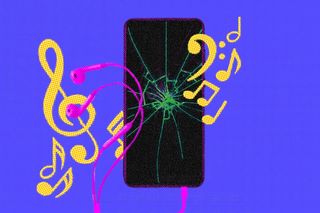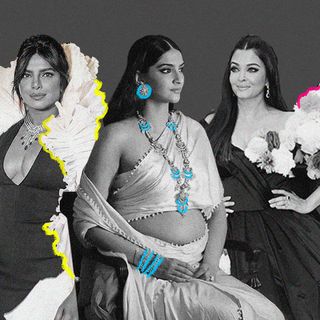
Are IG Reels and TikTok Ruining Music?
Reels and videos beg the question of how much pop music is dictated by the algorithm, and how much of it is owed to an artist’s creativity.

Some would say we’re in a strange phase of the internet’s evolution. It takes no less than five minutes to take a digital stroll scrolling down Instagram’s many algorithmic cul de sacs to hit upon a reel with a track so familiar as to be grating. But usually, it is a snippet of a track — with the “drop” or the chorus being the most captivating part of a song. The pay-off is served prematurely hot so as to quickly get cold and fade away.
The reel dances themselves originated on TikTok — now banned in India — which is a platform that was described by Rolling Stone as a “staging ground for hits.” TikToks also serve as sources of punishingly resistant earworms — popular TikTok songs and remixes stay stuck in our heads for far longer than we’d like and are, increasingly, the recipe for a song’s success.
“Leaving a task unfinished results in a sense of tension, because you feel psychologically compelled to finish the task. So your mind can’t let go of the task,” Callula Killingly a researcher who studies earworms, at the Queensland University of Technology, told CNET. This is, ostensibly, a good thing for musicians — but it’s also changing the music landscape fast.
“To keep streaming consumers engaged, it is increasingly common for songs to begin in medias res — with a hook, followed by a hook and ending with another hook,” wrote Charlie Harding and Nate Sloan in The New York Times. Increasingly, artists get paid for the number of streams — incentivizing them to “pull” listeners in from the very first second and changing up the order of the traditional song itself. Gone, it would seem, are the days of the tried and tested verse-chorus format of the last few decades, as Harding and Sloan explain. The 2010s brought with them a breakdown of traditional structures in music, and digitization and social media disrupted the structure of the song itself.
It’s not all bad news. Billie Eilish’s “Bad Guy” has been recognized as the first smash hit that broke from traditional song structures — songwriter Emily Warren noted how Eilish’s music was key to “upending the rigid song structures from a decade ago,” where artists now focus on “the hook” more than they traditionally would have on the chorus. “You’re not just competing against other creators. You’re also competing against everything else that takes up our time: podcasts, TV, apps, and more,” said Harding and Sloan, of the demands from artists in the streaming age. There is a compelling argument to be made here in favor of the assertion that things are getting worse: when music is no longer music but content, it is bound to lose some of the distinctive qualities that give it texture and meaning.
Related on The Swaddle:
Female Artists Are Less Likely to Feature in Music App Recommendations, Study Finds
Researchers have also studied how an older form of “pay for play” or “payola” model that was previously regulated has now taken on new forms — artists can pay influencers on TikTok or Instagram to play their songs and direct new listeners to stream their music. This is how TikTok also becomes a new venue to learn about new music — making the 15-second clip version that much more crucial. It also makes TikTok essential to a song’s marketing — often propelling them into becoming the top hits. In a report released by TikTok, the company stated how 90 songs that trended on the platform made it to the Billboard top 100 — and five made it to the number one spots. As a result, the commerce of streaming is making songs shorter and catchier — but does this necessarily mean better?
Arguably, yes and no. TikTok gave rise to Lil Nas X — the most irreverent and quintessentially Gen Z artist to come out of the last two years. Lil Nas X promoted his record-breaking hit “Old Town Road” on TikTok first — paving the way for his genre-bending, chimerical, and radically queer persona that blends artist and music seamlessly.
TikTok being virtually free and accessible to anyone has also forced record labels to reckon with their own imposition of rules and turn a creative enterprise into an industry. New possibilities, diverse talent, and a rejection of the old guard seem to be the order of things on TikTok.
But not everything about the trend of reels-music is as straightforward as rejigging the order of things. Rolling Stone reported how mega-influencers on TikTok like Addison Rae charge tens of thousands of dollars to perform a dance to someone’s song — and not even original dances at that. It then not only becomes a question of whether the platform dilutes music but also the culture of enjoying it — as white influencers with clout end up climbing on the successes of other, better, lesser-known, and usually marginalized dancers on the platform.
Pop music has always responded to, and been shaped by, the dominant technologies and economies of their times. But the question to contend with in the streaming age is: how much of the music is dictated by the algorithm, and how much of it is owed to an artist’s creativity? “This is what talented musicians do: bend the rules to convey meaning. When enough of them bend the rules at the same time, the rules get rewritten,” wrote Harding and Sloan, adding that “to some, these changes may appear to be bleak portents, hints of a future in which the chorus becomes subservient to the hook just so that our impatient, digitally addled brains don’t nudge us to hit ‘skip.'”
Related on The Swaddle:
Music From Happier Times Is Dominating Playlists Under Lockdown
This type of music has been variously described by critics as banal, “streambait” or “Spotify-core” pop — referring to a “blandness” that “[has] seized on an audience of distracted, perhaps overworked, or anxious listeners whose stress-filled clicks… generate anesthetized, algorithmically designed playlists,” according to Liz Pelly. But researchers argue that such notions of today’s music run the risk of falling upon masculinist, “rockist” [meaning rock music zealots] discourses to undermine the creativity and inherent value in this type of ambient music — popularized by Brian Eno.
Moreover, many researchers point out that the anxieties about shorter songs ruining music, echo earlier anxieties about the three-minute song format popularized by the record. But brevity can capture much more about a generation than it leaves out: it “can distill an essence, seize a moment, sum up a movement, galvanize an audience,” according to critic David Marsh.
On the other hand, the ubiquity and lack of choice in what we’re presented with by algorithms have led some to argue that the public has been “brainwashed” into liking music that is objectively worse — according to a big study in 2012, songs have become more homogenous, more risk-averse, with less timbre (or texture), and less “harmonically complex” over time. Moreover, algorithms contain in-built biases — which could be leading to older hierarchies becoming reproduced in a seemingly democratized model.
But another analysis notes that many put-downs of today’s music “all too often risk simplification, reduction, and snobbery, and draw on old anxieties in an unreflexive way,” while also recognizing that “music cannot evade the fundamentally damaged nature of the societies in which we live.”
In short: there are no easy answers. Music does shift and evolves over time — but the jury is still out on whether this time, in particular, is making it turn for the worse. If you find yourself mentally humming “my money don’t jiggle jiggle, it folds,” in an endless loop without knowing what comes next, you be the judge.
Rohitha Naraharisetty is a Senior Associate Editor at The Swaddle. She writes about the intersection of gender, caste, social movements, and pop culture. She can be found on Instagram at @rohitha_97 or on Twitter at @romimacaronii.
Related


How Internet Culture Changed What It Means to be the ‘Best Version’ of Yourself
